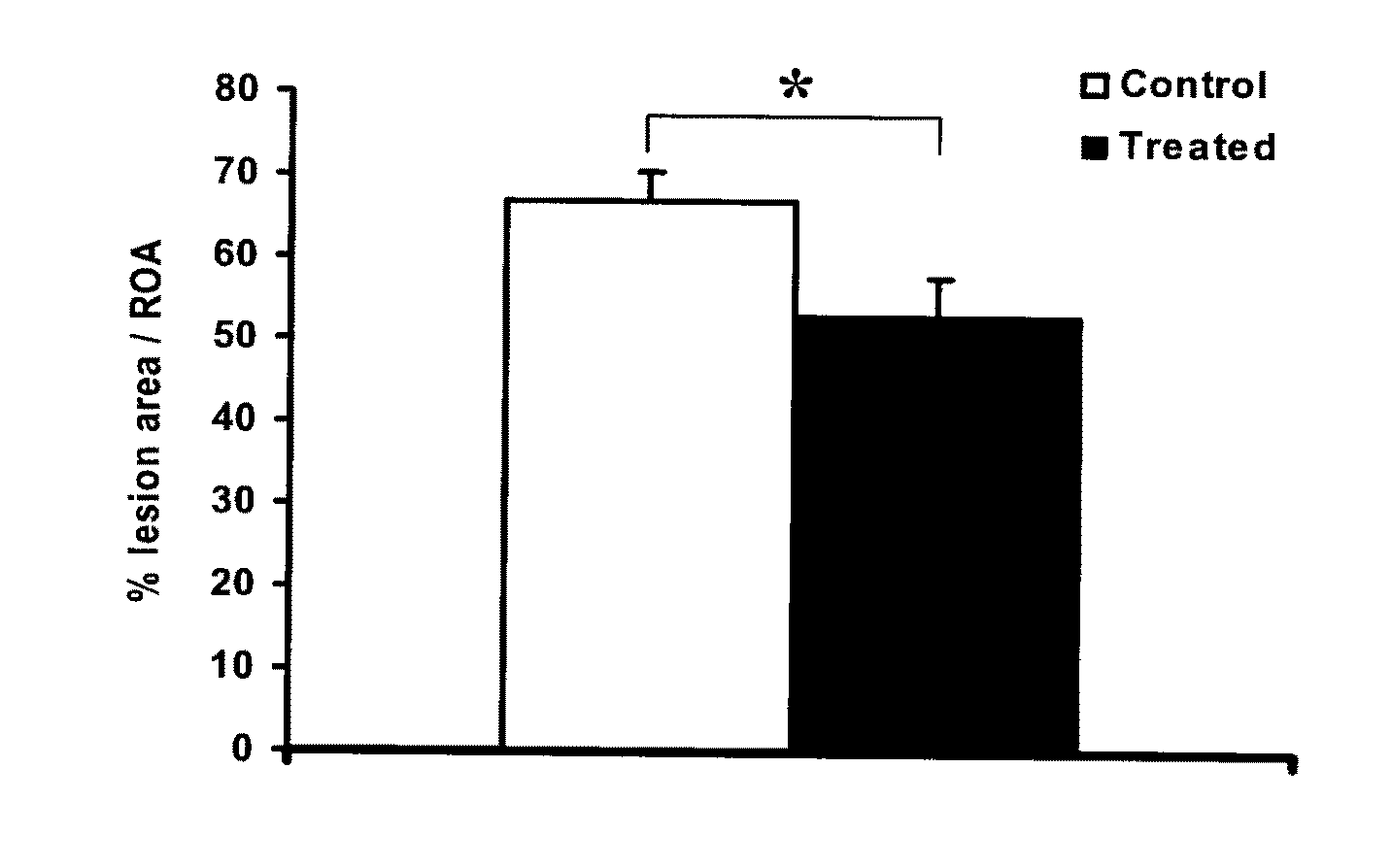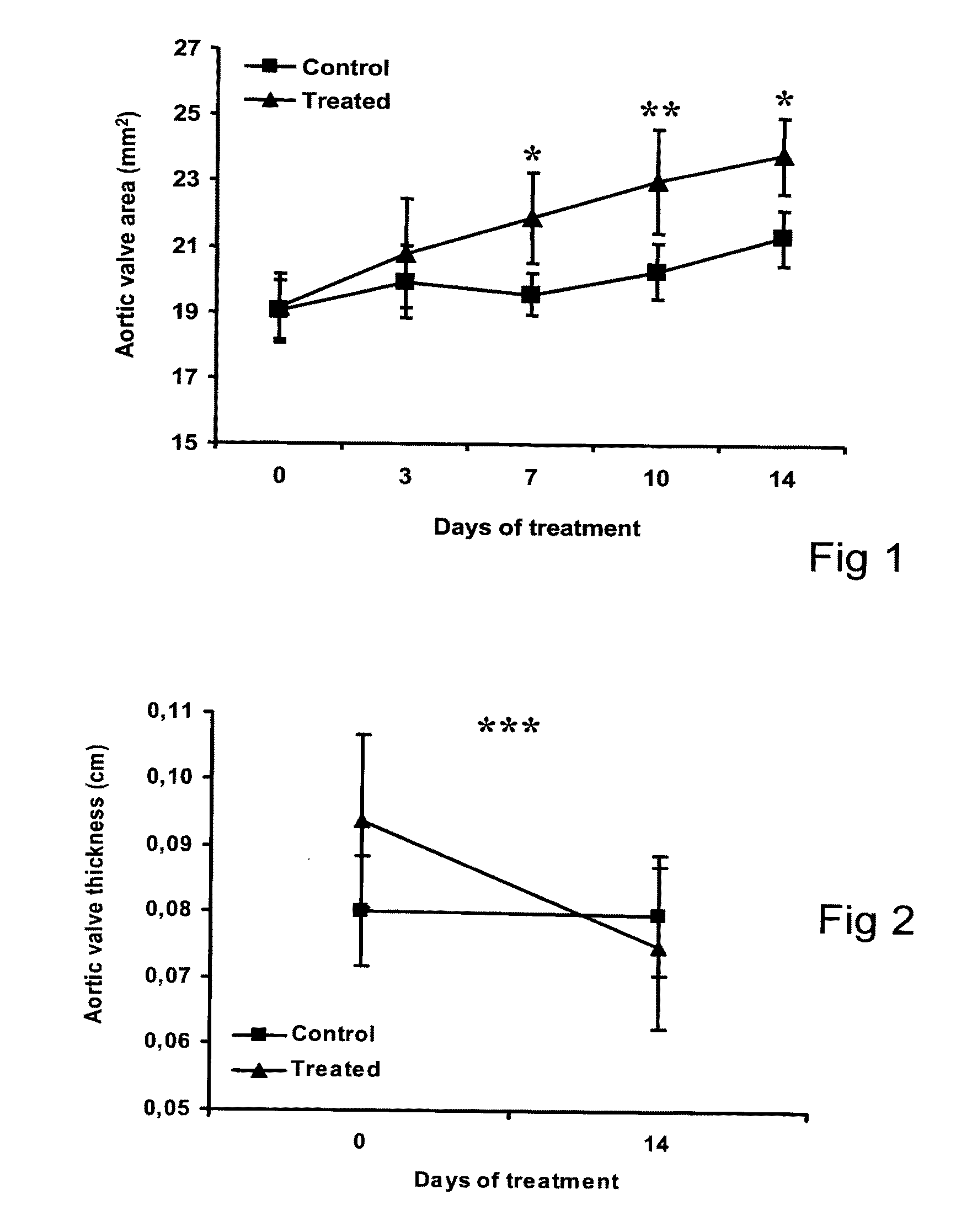Method and compound for the treatment of valvular disease
a valvular disease and compound technology, applied in the field of medical methods and compounds, can solve the problems calcific injury, difficult to determine whether the valve is bicuspid or tricuspid, etc., to slow down or stop the progression of aortic valve stenosis, reverse valvular stenosis, and slow the progression of valvular disease.
- Summary
- Abstract
- Description
- Claims
- Application Information
AI Technical Summary
Benefits of technology
Problems solved by technology
Method used
Image
Examples
example
[0200]A complex animal model of aortic valve stenosis has been developed in rabbits. The model resulted in aortic valve stenosis characterized by a calcification similar to what is observed in a clinical setting in humans.
[0201]Methods
[0202]Animals and Experiments
[0203]An animal model adapted from that described by Drolet et al. (12) was used. Fifteen male New-Zealand White rabbits (2.7-3.0 kg, aged 12-13 weeks) were fed with a 0.5% cholesterol-enriched diet (Harlan, Indianapolis, Ind.) plus vitamin D2 (50000 UI per day; Sigma, Markham, Canada) in the drinking water until significant AVS, as defined by a decrease >10% of aortic valve area (AVA) or of the transvalvular velocities ratio (V1 / V2), could be detected by echocardiography (12.9±2.4 weeks).
[0204]The animals then returned to a standard diet (without vitamin D2) to mimic cholesterol lowering and were randomly assigned to receive either saline (control group, n=8) or the ApoA-1 mimetic peptide (treated group, n=7). Rabbits were...
PUM
| Property | Measurement | Unit |
|---|---|---|
| body weight | aaaaa | aaaaa |
| body weight | aaaaa | aaaaa |
| body weight | aaaaa | aaaaa |
Abstract
Description
Claims
Application Information
 Login to View More
Login to View More - R&D
- Intellectual Property
- Life Sciences
- Materials
- Tech Scout
- Unparalleled Data Quality
- Higher Quality Content
- 60% Fewer Hallucinations
Browse by: Latest US Patents, China's latest patents, Technical Efficacy Thesaurus, Application Domain, Technology Topic, Popular Technical Reports.
© 2025 PatSnap. All rights reserved.Legal|Privacy policy|Modern Slavery Act Transparency Statement|Sitemap|About US| Contact US: help@patsnap.com



